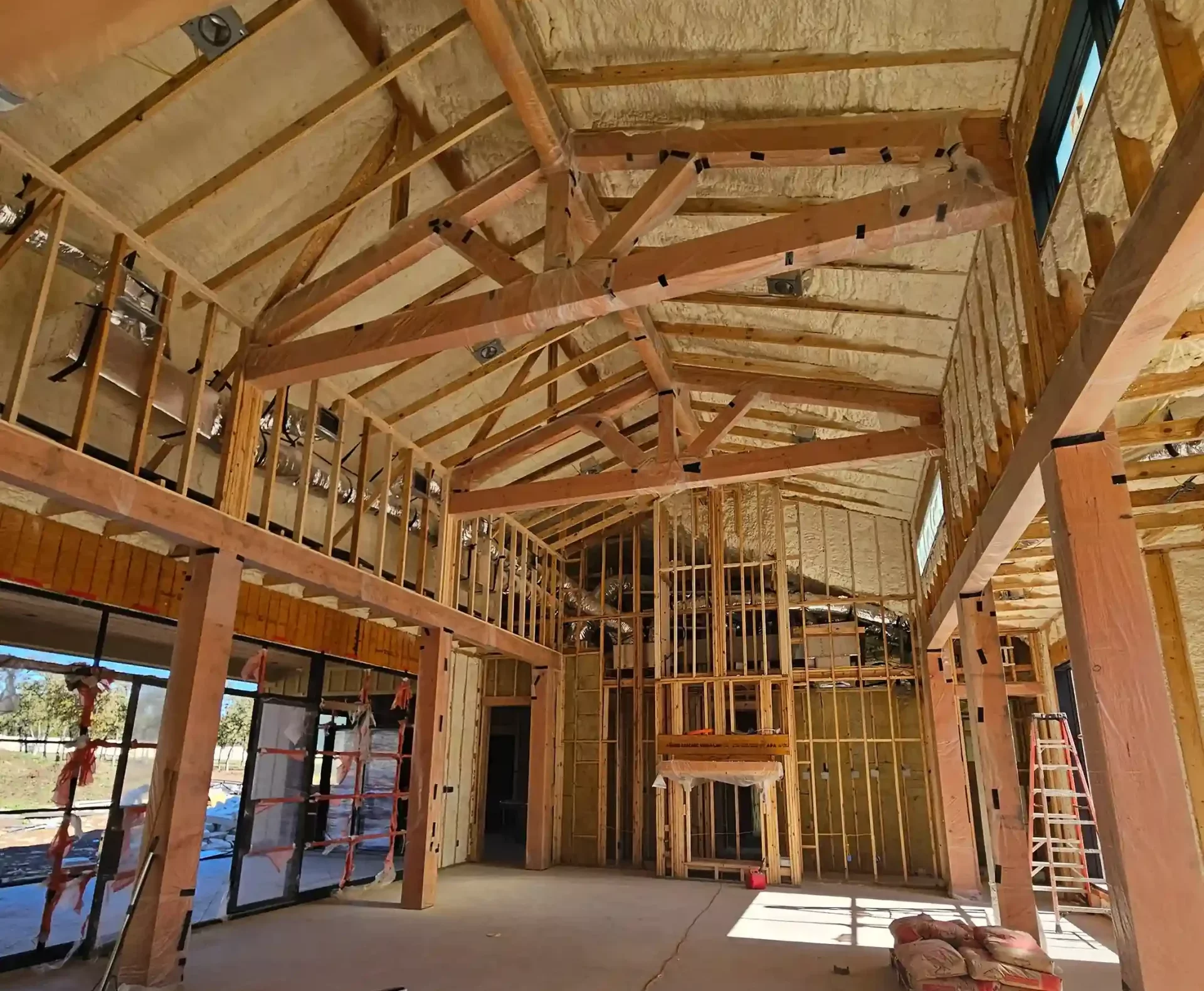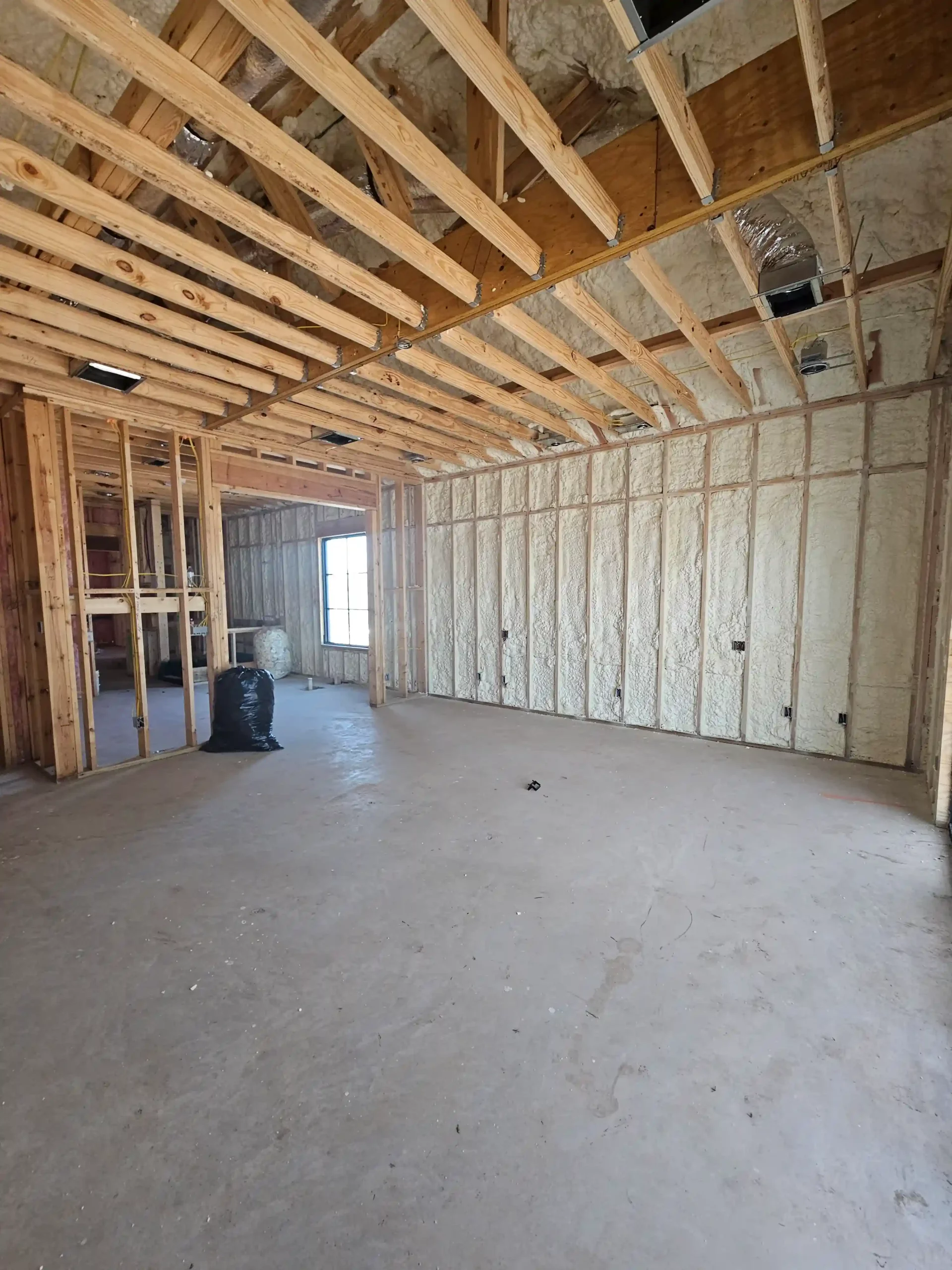
Spray foam insulation delivers exceptional value for Pflugerville homes, particularly given the region’s extreme temperature swings and humidity challenges. Properties with spray foam typically achieve 30-50% energy savings compared to traditional fiberglass insulation, while significantly improving indoor air quality and moisture control. The investment becomes worthwhile when homeowners prioritize long-term energy efficiency, comfort consistency, and structural protection against Central Texas weather conditions.
Pflugerville’s climate demands robust insulation solutions that address both scorching summers exceeding 100°F and occasional winter freezes. Spray foam’s superior air sealing properties and thermal resistance make it uniquely suited for this environment, though the decision depends on specific home characteristics, existing insulation conditions, and performance expectations. This analysis examines the practical considerations based on extensive field experience in Central Texas residential applications.
Central Texas presents unique challenges that traditional insulation struggles to address effectively. Summer temperatures routinely exceed 95°F for months, while winter occasionally drops below freezing. Humidity fluctuations create condensation risks that can compromise building integrity and indoor air quality.
Spray foam addresses these challenges through its dual function as both insulation and air barrier. Unlike fiberglass batts that allow air movement, spray foam creates a continuous thermal envelope that eliminates convective heat transfer. This characteristic proves particularly valuable in Pflugerville’s climate where temperature differentials between indoor and outdoor environments can exceed 40°F.
Bonus Tip: Install spray foam during moderate weather conditions (60-80°F) for optimal expansion and curing. Extreme temperatures during application can affect foam density and performance characteristics.
The material’s closed-cell variant provides additional moisture resistance, crucial for preventing mold growth in humid conditions. Open-cell spray foam offers excellent sound dampening while maintaining vapor permeability for controlled moisture management.
| Foam Type | R-Value per Inch | Density (lbs/ft³) | Vapor Permeability | Best Application |
|---|---|---|---|---|
| Closed-Cell | R-6 to R-7 | 2.0-2.2 | Vapor Barrier | Exterior walls, basements |
| Open-Cell | R-3.5 to R-4 | 0.5-0.6 | Vapor Permeable | Interior walls, attics |
| Medium-Density | R-5 to R-6 | 1.0-1.5 | Semi-permeable | Mixed applications |
Pflugerville’s building stock includes both newer constructions and older homes with varying insulation needs. Newer homes often benefit from targeted spray foam applications in problem areas, while older properties may require comprehensive insulation upgrades.
The area’s expansive clay soil creates unique challenges for basement and foundation insulation. Closed-cell spray foam provides superior moisture protection against hydrostatic pressure and soil moisture infiltration common in Central Texas foundations.
Bonus Tip: Address air leaks around electrical penetrations and plumbing chases before spray foam application. These areas represent significant energy loss points that proper preparation can eliminate.

Several critical factors determine whether spray foam represents the best investment for your specific situation. Existing insulation condition plays a major role in decision-making. Homes with damaged, compressed, or inadequate insulation see dramatic improvements, while properties with recently installed quality insulation may not justify the upgrade expense.
Building age and construction type significantly impact spray foam effectiveness. Post-1990 construction typically features better air sealing, reducing spray foam’s advantage over other high-performance options. Pre-1980 homes often contain numerous air leaks that spray foam addresses comprehensively.
HVAC system condition affects return on investment calculations. Oversized systems in homes with improved insulation may cycle inefficiently, negating some energy savings. Right-sizing HVAC equipment after insulation upgrades maximizes performance benefits.
Indoor air quality sensitivity in household members influences material selection. Some individuals experience sensitivity to spray foam off-gassing, though properly installed and cured foam typically presents minimal issues.
Bonus Tip: Schedule spray foam installation during periods when occupants can vacate for 24-48 hours. This allows complete curing and eliminates any temporary odor concerns.
Spray Foam Tech specializes in residential applications tailored to Central Texas climate conditions. Our closed-cell spray foam service provides maximum thermal resistance and moisture protection for exterior applications, foundations, and problem areas requiring vapor barrier properties.
Open-cell spray foam installation offers cost-effective thermal and acoustic performance for interior applications. This service works particularly well for attic spaces and interior wall cavities where vapor permeability benefits indoor air quality management.
Homeowners frequently ask about application timing and weather sensitivity. Spray foam installation requires dry conditions with temperatures between 60-85°F for optimal results. Humidity levels should remain below 85% during application and initial curing phases.
Installation duration varies based on project scope and access complexity. Typical residential applications require 1-3 days, depending on square footage and preparation requirements. Complex retrofit projects may extend longer due to access challenges and substrate preparation needs.
Odor concerns during installation and curing represent common inquiries. Professional-grade spray foam produces minimal odor when properly mixed and applied. Any temporary odor typically dissipates within 24-48 hours of installation completion.
Spray foam insulation proves most beneficial for Pflugerville,TX homes with specific performance requirements and building characteristics. Properties experiencing significant temperature variations between rooms, high energy bills despite reasonable usage, or moisture-related issues often see substantial improvements.
The investment makes sense when viewed as a long-term building improvement rather than short-term expense. Quality spray foam installations provide decades of consistent performance with minimal maintenance requirements.
Consider your household’s comfort priorities, energy efficiency goals, and budget timeline when evaluating options. Spray foam typically delivers the highest performance ceiling but requires professional installation and higher upfront investment compared to traditional alternatives.
Determining the right insulation solution requires understanding your home’s specific conditions and performance goals. Professional evaluation identifies problem areas, assesses existing insulation effectiveness, and recommends appropriate spray foam applications for maximum benefit.
Spray Foam Tech provides comprehensive assessments for Pflugerville area homes, helping homeowners make informed decisions based on building characteristics and performance objectives. Contact our team at oldworldtx@hotmail.com or call (737) 777-9590 to schedule a detailed consultation and receive customized recommendations for your property’s insulation needs.
Quality spray foam installations typically maintain effectiveness for 25-30 years in Central Texas conditions. The material doesn’t settle, compress, or degrade like traditional insulation, maintaining consistent R-value throughout its lifespan. Closed-cell foam shows particular longevity due to its structural properties and moisture resistance.
Properly designed spray foam installations improve indoor air quality by eliminating uncontrolled air leaks while maintaining appropriate ventilation. Professional installations include ventilation planning to ensure adequate fresh air exchange. Homes sealed with spray foam often require mechanical ventilation systems for optimal air quality management.
Spray foam performs exceptionally well in high-temperature conditions, maintaining thermal resistance that reduces cooling loads. The material’s thermal properties remain stable at temperatures exceeding 150°F, well above typical attic temperatures. Closed-cell foam provides additional benefits by preventing radiant heat transfer through building surfaces.
Spray foam requires minimal maintenance once properly installed. Annual visual inspections check for any physical damage or gaps that might develop. Unlike traditional insulation, spray foam doesn’t require replacement due to settling or moisture damage. Minor repairs can address any damage from pest activity or mechanical work.